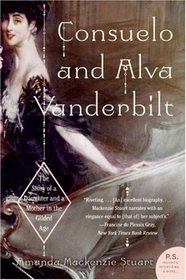Helpful Score: 2
From Amazon:
In 1875, the strong-willed Alva Smith married an heir to the Vanderbilt fortune in order to save her own family from further descent into genteel poverty. Twenty years later, she compelled her daughter Consuelo into a loveless marriage to the ninth Duke of Marlborough, in order to provide her with a career rather than an empty life. Mother's and daughter's remarkably similar trajectories through lifedifficult first marriages, happy second ones, social leadership, arts patronage, a shift into activismwere shaped by the opportunities wealth offered and the calculated use of marriage as a business transaction in their class and era. In her first book, Stuart uses a remarkable breadth of sources to follow her subjects to Newport, R.I.; India; late Victorian and Edwardian England; the heart of the women's movement; and the south of France at the outbreak of WWII She tells a riveting story but keeps her distance from her subjects, not offering final judgment on Alva's coercion of her daughter or allowing emotion to intrude on the deaths of major characters. Still, Alva and Consuelo emerge as unique and fascinating characters, and the details of their lives and times make a very entertaining read.
In 1875, the strong-willed Alva Smith married an heir to the Vanderbilt fortune in order to save her own family from further descent into genteel poverty. Twenty years later, she compelled her daughter Consuelo into a loveless marriage to the ninth Duke of Marlborough, in order to provide her with a career rather than an empty life. Mother's and daughter's remarkably similar trajectories through lifedifficult first marriages, happy second ones, social leadership, arts patronage, a shift into activismwere shaped by the opportunities wealth offered and the calculated use of marriage as a business transaction in their class and era. In her first book, Stuart uses a remarkable breadth of sources to follow her subjects to Newport, R.I.; India; late Victorian and Edwardian England; the heart of the women's movement; and the south of France at the outbreak of WWII She tells a riveting story but keeps her distance from her subjects, not offering final judgment on Alva's coercion of her daughter or allowing emotion to intrude on the deaths of major characters. Still, Alva and Consuelo emerge as unique and fascinating characters, and the details of their lives and times make a very entertaining read.




